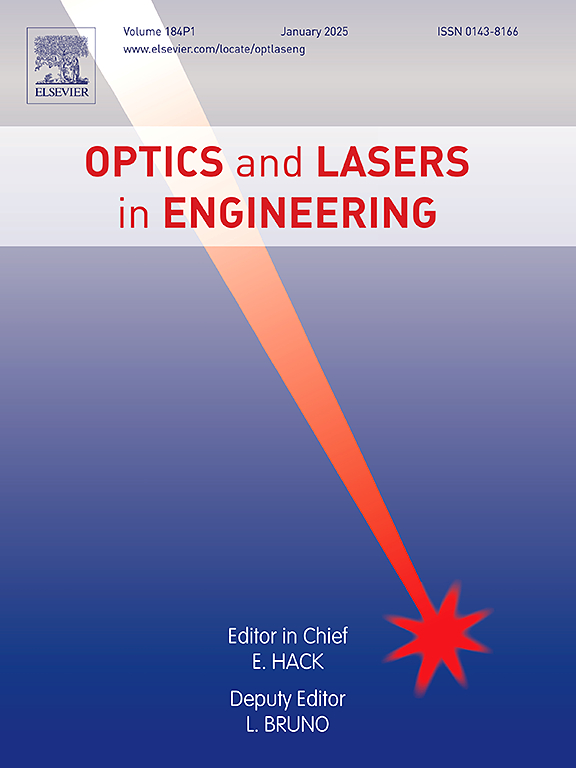Enhancing polarization contrast of skin of PS-OCT using an image integration method
IF 3.5
2区 工程技术
Q2 OPTICS
引用次数: 0
Abstract
Multiple polarization parameters analysis methods directly lead to the problem of information redundancy and poor readability. Improving polarization image contrast and reducing redundant image information is a direct way to improve the efficiency of polarization information analysis. In this study, we investigate the two methods of the light propagation model and the exploration of the one unique form of canonical decomposition to obtain an integration method of the multiple polarization parameters (IMMPP). By combination of the expressions of 14 parameters, six 1st integrated parameters of axis, amplitude, and the components of degree of depolarization, and three 2nd integrated parameters of dichroism, birefringence, and depolarizance are derived and expressed. Ex vivo skin of a healthy mouse is imaged by PS-OCT, and images of integrated parameters are calculated. The results show that the 1st integrated parameters can be used for preliminary and large-scale monitoring of sample status, revealing several features with well contrast, and the 2nd integrated parameters can be used for small-range and efficient identification of sample local characteristics, retaining the advantage of high contrast, make up for the defect of blurred imaging at deeper depths with better contrast in the imaging depth. This approach is expected to support efficient and accurate disease diagnosis.
利用图像积分法增强PS-OCT皮肤偏振对比
多极化参数分析方法直接导致信息冗余和可读性差的问题。提高偏振图像对比度,减少冗余图像信息是提高偏振信息分析效率的直接途径。在本研究中,我们研究了光传播模型的两种方法,并探索了一种独特的正则分解形式,以获得多偏振参数的积分方法(IMMPP)。结合14个参数的表达式,导出并表达了轴、幅、去极化度分量的6个一级积分参数和二色性、双折射、去极化3个二级积分参数。采用PS-OCT对健康小鼠离体皮肤进行成像,并计算综合参数图像。结果表明,第1个积分参数可用于样品状态的初步和大规模监测,揭示出对比度较好的若干特征;第2个积分参数可用于样品局部特征的小范围有效识别,保留了高对比度的优势,弥补了较深成像模糊的缺陷,成像深度对比度较好。这种方法有望支持有效和准确的疾病诊断。
本文章由计算机程序翻译,如有差异,请以英文原文为准。
求助全文
约1分钟内获得全文
求助全文
来源期刊

Optics and Lasers in Engineering
工程技术-光学
CiteScore
8.90
自引率
8.70%
发文量
384
审稿时长
42 days
期刊介绍:
Optics and Lasers in Engineering aims at providing an international forum for the interchange of information on the development of optical techniques and laser technology in engineering. Emphasis is placed on contributions targeted at the practical use of methods and devices, the development and enhancement of solutions and new theoretical concepts for experimental methods.
Optics and Lasers in Engineering reflects the main areas in which optical methods are being used and developed for an engineering environment. Manuscripts should offer clear evidence of novelty and significance. Papers focusing on parameter optimization or computational issues are not suitable. Similarly, papers focussed on an application rather than the optical method fall outside the journal''s scope. The scope of the journal is defined to include the following:
-Optical Metrology-
Optical Methods for 3D visualization and virtual engineering-
Optical Techniques for Microsystems-
Imaging, Microscopy and Adaptive Optics-
Computational Imaging-
Laser methods in manufacturing-
Integrated optical and photonic sensors-
Optics and Photonics in Life Science-
Hyperspectral and spectroscopic methods-
Infrared and Terahertz techniques
 求助内容:
求助内容: 应助结果提醒方式:
应助结果提醒方式:


